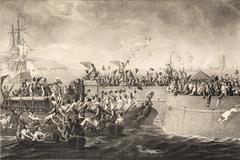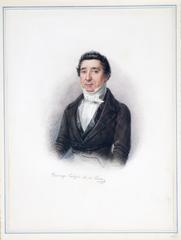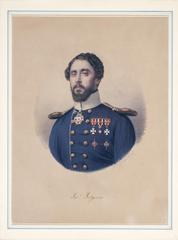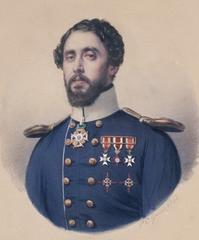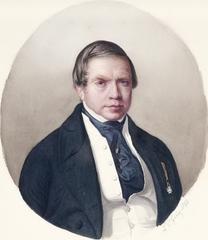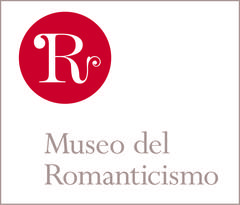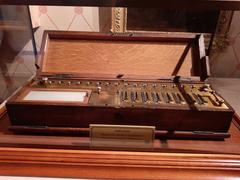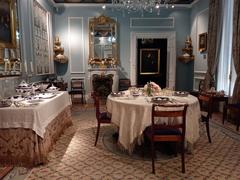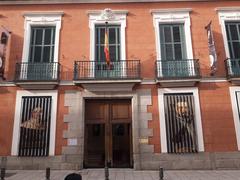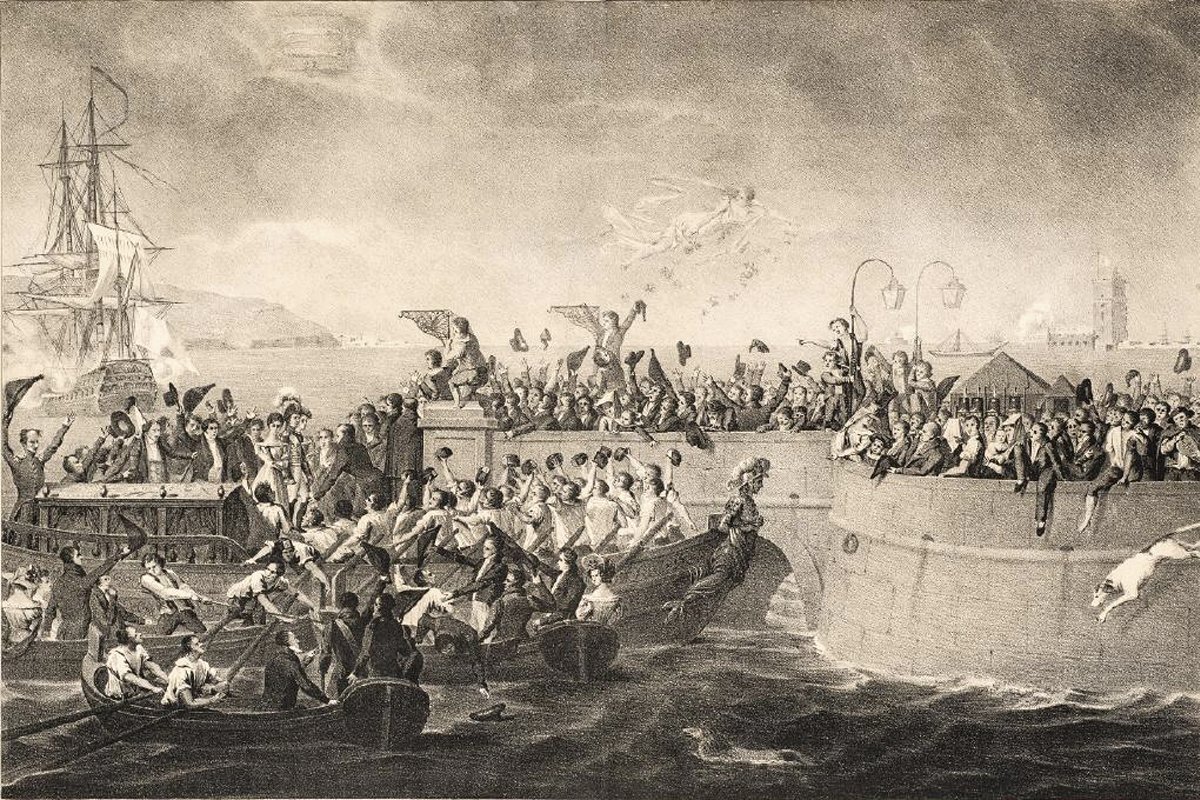
Museum of Romanticism Madrid: Visiting Hours, Tickets, and Historical Guide
Date: 14/06/2025
Introduction
The Museum of Romanticism (Museo del Romanticismo) in Madrid is a singular portal into Spain’s 19th-century artistic, political, and cultural transformation. Housed in a meticulously preserved neoclassical palace, the museum immerses visitors in the Romantic era—an epoch defined by its passion, innovation, and upheaval. Whether you are a dedicated history buff, an art enthusiast, or a curious traveler, this guide covers everything you need: from visiting hours and ticketing to collection highlights, accessibility, and nearby attractions. For further planning, consult the official museum website and authoritative guides like Fascinating Spain and Madrid Secreto.
Table of Contents
- Introduction
- History and Foundation
- The Romantic Era in Spain
- Architectural Heritage and Museum Layout
- Collection Highlights
- Visitor Information: Hours, Tickets, and Access
- Accessibility and Facilities
- Special Events and Educational Activities
- Travel Tips and Nearby Attractions
- Frequently Asked Questions (FAQ)
- Conclusion and Planning Resources
- References
History and Foundation
Founded in 1924 by Benigno de la Vega-Inclán, the Museum of Romanticism was conceived as a tribute to the overlooked Romantic period in Spain. The inspiration came from a 1922 speech by philosopher José Ortega y Gasset, who envisioned a museum capturing the era’s “spirit of life.” Initially located in a rented palace, the museum soon found its permanent home in the 18th-century Palacio del Marqués de Matallana—an aristocratic mansion that embodies the refined tastes of the Romantic bourgeoisie (Fascinating Spain; Wikipedia).
The museum’s collection, expanded over the decades, was bequeathed to the Spanish State after Vega-Inclán’s death in 1942. It was later declared a historical-artistic monument and, in 2009, renamed Museo Nacional del Romanticismo, underlining its national significance (Wikipedia).
The Romantic Era in Spain: Context and Significance
Spanish Romanticism flourished from the 1830s to 1860s, a period marked by the reign of Queen Isabel II and profound social change. The movement emphasized emotion, individuality, and national identity, diverging from Enlightenment rationalism. It produced enduring works in art, literature, and music, elevating figures like Francisco de Goya, Mariano José de Larra, and the Bécquer brothers. The museum’s thematic curation invites visitors to reconsider this era as a foundation of modern Spanish identity (La Vanguardia).
Architectural Heritage and Museum Layout
The museum’s setting—a late 18th-century neoclassical palace at Calle San Mateo, 13—serves as an authentic backdrop to its collections. Its grand staircase, original floors, and period interiors have been carefully restored to evoke bourgeois life under Queen Isabel II. Visitors progress through salons, ballrooms, and private studies arranged with Empire and Isabelline furnishings, mirrors, and chandeliers, creating a vivid sense of place (Introducing Madrid; Fascinating Spain).
The museum also features special rooms such as the ballroom, boudoir, and a chapel, as well as a tranquil romantic garden (currently under renovation), all of which enhance the immersive visitor experience (Museo del Romanticismo – Garden).
Collection Highlights
Fine Art
- Paintings: Works by Francisco de Goya, Federico de Madrazo, José de Madrazo, Antonio María Esquivel, and Valeriano Domínguez Bécquer. Notable pieces include Goya’s “Piety” and Madrazo’s portrait of the Marquise of Remisa.
- Sculpture: Busts, allegorical pieces, and funerary art reflecting Romantic ideals.
Decorative Arts
- Furniture: Empire and Isabelline styles, Biedermeier influences, and opulent tableware.
- Porcelain and Ceramics: Sèvres, Meissen, and Royal Factory of La Moncloa pieces.
- Glassware and Silver: Ornate candelabra, delicate drinking vessels, and personal items.
Fashion and Personal Artifacts
- Costumes: Silk gowns, military uniforms, and accessories like fans, gloves, and jewelry.
- Manuscripts: Original letters by José Zorrilla and Gustavo Adolfo Bécquer.
- Musical Instruments: Period pianos, guitars, and harps.
Everyday Life and Sentimental Objects
- Children’s toys, dolls, mourning jewelry, miniature portraits, and Mariano José de Larra’s suicide pistol illustrate both the public and private rituals of the era (Museo del Romanticismo).
Visitor Information: Hours, Tickets, and Access
Location
- Address: Calle San Mateo, 13, 28004 Madrid, Spain
- Metro Stations: Tribunal (Lines 1 & 10), Chueca (Line 5)
- Buses: Lines 3, 37, 40, 149
- Map and Directions
Opening Hours
- Winter (Nov 1 – Apr 30):
Tue–Sat: 9:30–18:30
Sun & holidays: 10:00–15:00 - Summer (May 1 – Oct 31):
Tue–Sat: 9:30–20:30
Sun & holidays: 10:00–15:00 - Closed: Mondays; Jan 1, Jan 6, May 1, Nov 9, Dec 24–25, Dec 31 (Madridista Forever)
Tickets and Admission
- Free Admission: Until June 29, 2025, for the museum’s centenary.
- Standard Admission (after June 2025):
General: €3
Reduced: €1.50 (students, seniors, groups)
Free: Saturdays after 14:00, all day Sundays, International Museum Day, and specific occasions. - Annual Pass: €25
- Combination Passes: “Abono 8 Museos de Madrid” (€16 for 15 days), “Abono 4 Museos de Madrid” (€8 for 10 days) (esmadrid.com)
- Purchase: On-site or online via the official website
Recommended Visit Duration
- 1 to 1.5 hours for a comprehensive visit; arrive early on free days to avoid crowds.
Accessibility and Facilities
Physical Accessibility
- Wheelchair-accessible entrance at Calle Beneficiencia, 14.
- Elevator and four wheelchairs available for loan.
Visual and Auditory Accessibility
- Magnifiers and audioguides with audio description.
- Sign language guides and subtitles via PDA.
- Magnetic loop systems at visitor service points.
Additional Services
- Multilingual audioguides (Spanish, English).
- Cloakroom, baby changing facilities, lost and found.
- Specialized research library (by arrangement).
For more details: Visitor Information
Special Events and Educational Activities
The museum regularly hosts temporary exhibitions, guided tours in Spanish and English, educational workshops, and family-friendly activities. For schedules and bookings, consult the museum’s exhibitions page. In 2024, the centenary celebrations included special exhibitions and free entry in June (Madrid Secreto).
Travel Tips and Nearby Attractions
- Best Times to Visit: Weekday mornings or early afternoons; avoid peak hours on free admission days.
- Nearby Sites: Museo de Historia de Madrid (free entry), Plaza de Colón, National Archaeological Museum, Mercado de Barceló.
- Café and Garden: The museum’s garden (Jardín del Magnolio) and café are currently closed for renovations.
Combine your visit with other historical sites to enrich your Madrid experience (The Lady Who Travels).
Frequently Asked Questions (FAQ)
Q: What are the Museum of Romanticism’s opening hours?
A: See above for seasonal schedules; last entry is 15 minutes before closing.
Q: How much do tickets cost?
A: General admission is €3 (after June 29, 2025); free at specified times and for certain groups.
Q: Is the museum accessible for visitors with disabilities?
A: Yes, with accessible entrance, elevators, and support services.
Q: Are guided tours available?
A: Yes, in Spanish and English, by prior arrangement.
Q: Can I take photos inside?
A: Non-flash photography is permitted in most areas; check for restrictions in some rooms.
Q: Is the garden open?
A: The Jardín del Magnolio is temporarily closed for renovations.
For more FAQs, see the official museum page.
Conclusion and Planning Resources
The Museum of Romanticism is a cultural gem offering a vivid, immersive journey into Spain’s Romantic era. With its elegant neoclassical setting, extensive collections, and engaging programming, it stands as a highlight among Madrid historical sites. Plan ahead by checking hours, ticketing, and accessibility details, and make use of digital resources like the Audiala app for guided tours and updates. For a complete experience, explore nearby attractions and allow time to enjoy the museum’s tranquil ambiance.
Stay informed with the latest updates via the Museum’s official website, and follow our related articles for more insights into Madrid’s cultural landscape.
References
- Fascinating Spain
- Wikipedia - Museum of Romanticism (Madrid)
- La Vanguardia - Museum of Spanish Romantic Life
- Museo del Romanticismo Official Website
- esmadrid.com - Museo del Romanticismo
- Introducing Madrid - Museum of Romanticism
- Madrid Secreto - Free Museum Madrid June
- The Lady Who Travels - Free Museums in Madrid
